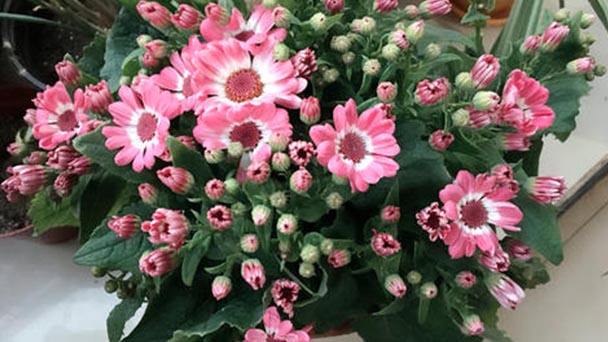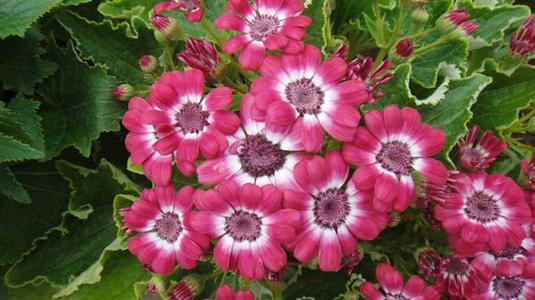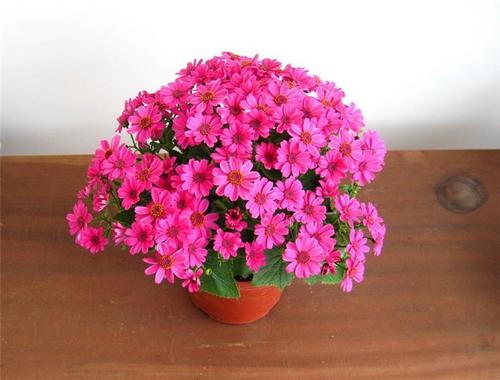How to care for Cineraria
Written by Maggie
Mar 23 2021

The beautiful appearance of Cineraria makes many people want to keep it, so how to care for Cineraria? Here are some Cineraria care guides.

Cineraria care for root rot
Improper fertilizer makes Cineraria roots rotted, it first needs to be treated as its roots rotted, and needs to reconfigure the soil conservation. The soil is not suitable, but also needs to be mixed with leaf rot soil, rural soil, river sand as a matrix. When cold frostbite occurs in winter, it is necessary to first treat frostbitten branches and leaves and roots, and then control the temperature at more than 5℃. When suffering from pests and diseases, it is necessary to pour insecticides such as dichlorvos into the soil for control. The following are details of Cineraria care for root rot.
1. Water and fertilizer care
Cineraria has a certain ornamental value, but when we care for Cineraria, if the water and fertilizer are not appropriate, it is easy to rot the roots. It is necessary to immediately remove the plant from the pot soil. First of all, the rotten roots should be treated in time, and it should be rearranged for pot soil and pot curing, so that it can grow better.
2. The soil care
Cineraria does not require much soil, but if the soil is not grown properly, it is easy to make the soil hardening, so that the roots can not absorb water and nutrients normally, so that the roots rot. When we care for Cineraria, the roots need to be mixed with leaf rot soil, garden soil and river sand as the substrate, and the rotten roots should be cut off and cured again.
3. Root and whisk frostbite
In fact, Cineraria has a certain cold resistance, but for the reason of rotten roots of Cineraria, it may also be caused by cold frostbite in winter. When we care for Cineraria, the frostbitten branches, leaves and roots need to be treated in time, and then the plants should be moved to a ventilated environment, and the soil should be irrigated with carbendazim.
4. Cineraria care for disease and insect control
If Cineraria is damaged by diseases and insects such as nematodes and ground tiger in the process of growth, its roots are also easy to rot, which affects the normal growth of the plant. When we care for Cineraria, it needs to be replaced with new pot soil immediately, and drenches insecticides such as dichlorvos into the soil to prevent diseases and insects. It also needs to master water control and fertilizer cultivation of Cineraria.

Cineraria care for leaves withered
Cause cineraria leaves withered for a variety of reasons. If it is the soil water is poured into the water in time, after watering often should keep the soil moist as the standard. If the temperature is too high, strengthened ventilated, will be moved to the plant ventilated breathe freely, or to the ground water spray cooling, insufficient light plant should be moved to sunlight place and appropriately increased light. The following are details of Cineraria care for leaves withered.
1. Moisture care
Cineraria leaves like to grow in a moist matrix. If the soil in the basin is too dry for a long time, it is easy to cause the leaves to grow brown and withered, which is one of the reasons why the leaves in the basin are how to go about. When we care for Cineraria, watering should be done in time, but not too much, to avoid water in the basin, and then watering should keep the soil moist as the standard.
2. Cooling treatment
Cineraria is a common thermophilic plant, and its suitable temperature for growth is about 15 ~ 23℃. If the temperature is higher than 30℃ for a long time, the leaves will appear yellow and withered. When we care for Cineraria, we should strengthen ventilation, put the plants in a ventilated environment for maintenance, and spray water to the ground in the high temperature season to achieve the purpose of cooling.
3. Light care
Cineraria can grow more exuberant in a sunny environment, especially when it is young or in a vigorous growth period, it is often unable to receive light, which can easily lead to blocked photosynthesis of leaves, and the phenomenon of growth will appear. When we care for Cineraria, the plant should be moved to a sunny place, and the time of exposure to light should be increased appropriately. It is appropriate to shade the strong light in summer.
4. Fertilizing care
Cineraria though like the nutrient-rich matrix in growth, but not too much fertilizer, or fertilizer, otherwise it will cause nutritional imbalance, internal blades appear the phenomenon of how weak. When we care for Cineraria, we should stop fertilization, during the period of growth probably fertilizing once every half a month is ok, and have to be diluted with water before fertilization, in order to reduce the concentration.

Latest Updated
- Benefits of Bugleweed - 7 Science-backed Health Benefits
- Bugleweed Dangers & Side Effects - Is It Poisonous?
- How to Plant Evergreen Trees - What You Should Know
- When to Plant Evergreens - Grow Guide for Evergreen Trees
- 12 Wonderful Evergreen Shrubs for Your Garden
- 12 Popular Evergreen Plants with Pictures for Beginners
- When And How To Prune A Lilac Bush Like a Pro
- How to Grow & Care for Lilac Vine (Hardenbergia Violacea)
- Japanese Lilac Tree (Syringa Reticulata) Care & Propagation Guide
- Shumard Oak Pros and Cons - What to Know
Popular Articles
- Winter maintenance of Antirrhinum Majus
- How to Grow Terminalia Mantaly Tree
- How to Grow and Care for Crossostephium Chinense
- How to grow Antirrhinum Majus in spring
- Peristeria Elata (Dove Orchid) Profile: Info & Care Guide
- Underwatered Snake Plant (Sansevieria Trifasciata) - Signs And How To Fix
- How to Care for Brazilian Jasmine Plant (Mandevilla Sanderi)
- How to Grow & Care for Graptopetalum Purple Delight in Summer
- Rosa Chinensis (China Rose): Plant Growing & Care Tips
- How to Care for Baby Sun Rose (Aptenia Cordifolia)